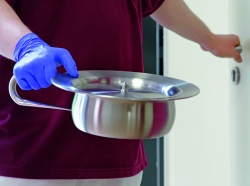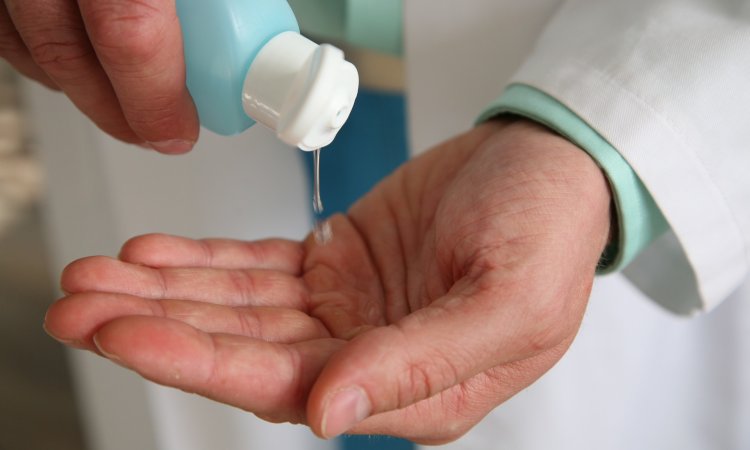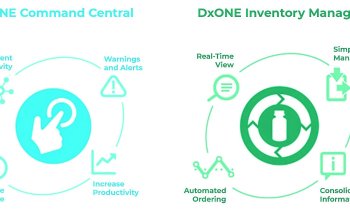Hygiene
Care, human dignity and the management of excreta
It's a topic which is frequently marginalised and tacitly accepted – care recipients are given a nappy even though they're continent simply because it's awkward and time-consuming for them to get to the toilet. The medical service of the German Central Federal Association of Health Insurance Funds and the National Association of Statutory Health Insurance Funds highlighted this problem in their most recent care quality report: "Too many care recipients are given nappies or catheters when they actually don't need them," said the report. Marcus Danner is someone who deals with the issue of human excreta on a day-to-day basis and understands the magnitude of the task facing care staff. He is a key account manager at Meiko, a manufacturer of cleaning and disinfection appliances and bedpan washer-disinfectors. We spoke to him about human dignity, time constraints in care settings, and managing patients' excreta.


Have absorbent incontinence products become your number one competitor?
Absolutely not. Absorbent incontinence aids are a shocking infringement of human rights for care home residents and a taboo topic that people are reluctant to discuss. That may sound radical, but it simply echoes the words of Claudia Mahler from the German Institute for Human Rights who discussed this issue in an interview with the German radio station Deutschlandfunk. She said that we need to help people go to the toilet so they can exercise this right as they see fit. Mahler argues that care homes which simply hand out nappies to all the residents because it works better in their busy schedule – and believe me that happens frequently – are actually limiting people's right to autonomy and sanitary care. So I think that going to the toilet can legitimately be classed as a human right.
As a manufacturer of bedpan washer-disinfectors you obviously have contact with the staff members in hospitals and care homes who manage human excreta. I don't imagine it's a particularly popular job...
No, it isn't. But our experience has shown us that this task forms an integral part of the care profession. We've had so many conversations with care workers, care service providers and infection control experts and we've seen that people understand the importance of patient excreta, but that unfortunately there is too much variation in how they deal with it.
What do you mean by variation?
I mean that unfortunately there isn't a clear definition of the whole process which starts with a bedpan being given to a patient and ends with the used medical device being properly cleaned. That's a major oversight when you consider that we're talking about something which is more contaminated with bacteria than virtually any other medical device. The glaring lack of an expert standard is what prompted us to work with Dr. Eva Fritz – a biologist at the German Consulting Centre for Hospital Epidemiology and Infection Control (BZH) and research assistant to BZH Medical Director Dr. med. Ernst Tabori – to break down and define each individual step in the process.
Why is this so important for hygiene and infection control in hospital wards and care homes?
The way people use disposable gloves and the points at which they disinfect their hands are key factors in successful bedpan management. And the question of where you place the full bedpan while you finish helping the patient is equally critical.
Could you envisage your flowchart becoming compulsory?
It's not our job to set binding standards, but as Dr. Eva Fritz rightly notes, care teams can go ahead and develop their own operating procedures and send them to their in-house infection control department for review. The latest issue of our customer magazine 'Hygiene for the World' contains one example of how those guidelines could look, so it's good starting point. Anyone who is interested can simply contact us to request a free copy or read the magazine online at www.meiko.de by clicking the 'Press' tab.
A step-by-step guide to bedpan management
Step 1:
Where should I set down a full bedpan?
The floor is the most suitable place, but obviously with some kind of mat if the bedpan is dirty. The floor can simply be cleaned afterwards with a disinfectant wipe if necessary. Care utensils like bedpans should never be left anywhere where somebody could trip over them. If there's no better alternative then you can also place the full bedpan on a stable rubbish bin. A dirty bedpan should never be placed on a patient's bed or side table, and certainly not on a chair!
Step 2:
What's the next step after helping the patient?
After helping the patient to clean up and get dressed, the nurse should remove their disposable gloves and put on a new pair. That's because they will have to touch the door handle to open the door. This part of the patient environment should only ever be touched with disinfected hands or clean gloves.
Step 3:
The dirty utility room
The door to the dirty utility room should also be opened with either a clean hand or clean gloves. Just like in the patient's room, the door handle is a key transmission vector!
Step 4:
Opening the bedpan washer-disinfector
The hand you use to open the bedpan washer should also be clean, because it will subsequently be used to remove the disinfected care utensil from the machine. That's the only way to prevent contamination.
Step 5:
Positioning the bedpan in the machine
The bedpan shouldn't be emptied before putting it in the machine! It's completely unacceptable to empty it into a slop sink or toilet. As soon as the door is closed, the machine will empty it automatically. That's the only way to stop aerosols from endangering care staff's health and prevent the dirty utility room from becoming contaminated. The bedpan lid should be placed in the separate holder intended for this purpose.
Step 6:
Start the machine
The clean hand is used to close the bedpan washer and press the start button.
Step 7:
Ensure maximum hygiene
Once again, the nurse should discard their glove at this point and disinfect their hands ready for the next task...
Caution required!
23.11.2015









